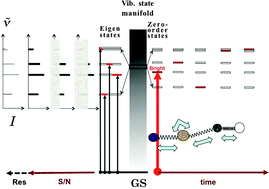Molecular spectroscopy and dynamics: a polyad-based perspective
Abstract
The efficiency and insight of global, polyad-based modeling in overtone

- This article is part of the themed collection: Spectroscopy and dynamics of medium-sized molecules and clusters

 Please wait while we load your content...
Please wait while we load your content...